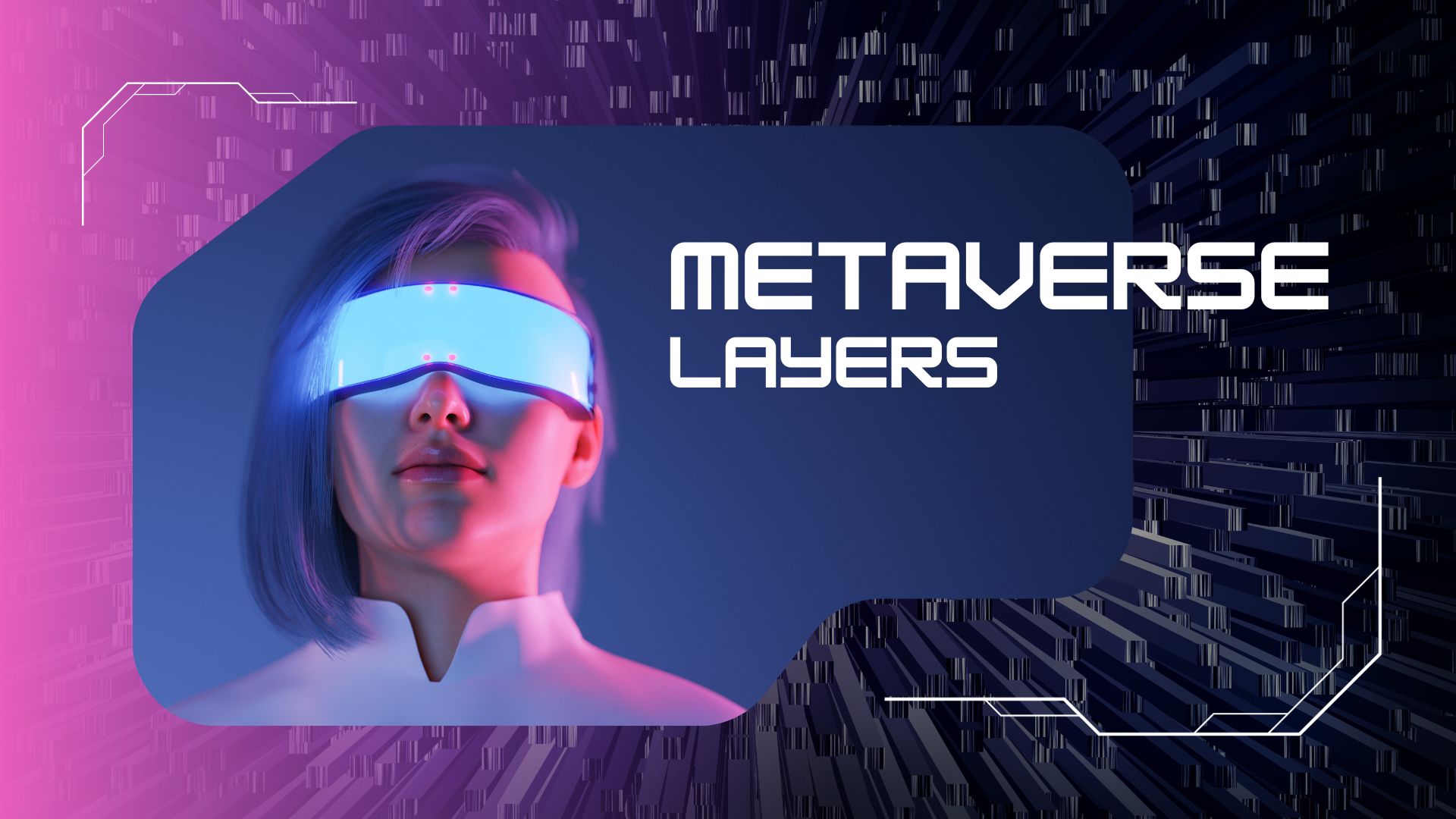Exploring The Seven Layers of the Metaverse

Investors are increasingly looking to the metaverse as a potential source of income, thus it is crucial to understand this virtual world's fundamental structural layers. According to famous author and entrepreneur Jon Radoff, who has written much on Web3 and related topics, the metaverse is divided into seven basic tiers. These seven levels stand in for the various phases of the value chain for the metaverse market. Despite its simplicity, this scientific approach to describing the metaverse's structure is thorough. This insight leads you through each of these seven layers so that you may better understand the metaverse and make the most of it.
Metaverse Layers
Let’s explore the metaverse layers on which the metaverse is based.
1#. Experience Layer
The metaverse concept encompasses more than just a 3D simulation of the real world for our purely passive observation. Instead, it will be an accurate portrayal of spatial distances and proportions that dematerialize real-world things thanks to photorealistic visual features. The constraints that are physically imposed might no longer be present in physical space due to the metaverse dematerializing it. Virtual reality in the metaverse has the power to deliver experiences that the real world cannot exhibit. This is a key reason why many renowned companies are spending money on large interactive live events. These activities offer an idea of how engaging events and activities in the metaverse might look because they take place on websites like Roblox and Decentraland. The excitement it has generated and the investments it has drawn are all a result of the realistic experiences it will soon provide. The metaverse may transform a range of human activities, from gaming and social interactions to shopping, theatre, and e-sports, with its immersive and real-time characteristics.
2#. Discovery Layer
The inbound and outbound discovery systems are still present in the metaverse ecology. When individuals are actively hunting for information, inbound discovery happens. Outbound, on the other hand, refers to the strategy of attempting to push communications out to people whether or not they request them.
In the world of Web 3.0, several characteristics of information exchange will be essential. Community-driven content, according to Radoff, is essential for metaverse marketing. The surge of content production that we are seeing in the influencer era will increasingly be discussed in the context of the metaverse. Recently, non-fungible tokens (NFTs) have served as some of its earliest examples. These digital assets began to be widely exploited by businesses as a marketing technique in 2021, becoming one of the trendiest themes. This is a fantastic approach to increase neighbourhood involvement, and it will develop the metaverse much further.
3#. The Creator Economy
To create and develop tools, applications, or asset marketplaces on earlier iterations of the internet, innovators needed to have some level of programming expertise. Nowadays, creating online apps is feasible without coding owing to web application frameworks. As a result, there are ever more designers and artists on the internet. Everyone will soon be able to create content on the internet without needing to spend hours studying programming. What characterizes the Web 3.0 economy, also known as the creative age, is this sharp growth in the number of creators.
Already, the creative sector is showing signs of expansion. Think about YouTube: There weren't many well-known YouTubers with millions of views at first. Typically, they produced vlogs, tutorials, or sketch comedy. No matter how big their audience is, millions of people can now create films about a wide range of topics. Even more people had this chance because of TikTok. The consumer may very easily transition into the creative in this new economy. Instead of having their experience mirrored by millions of others, people will be able to identify their speciality thanks to the metaverse. In addition to being immersive, social, and real-time, the experiences offered by the creative economy will also be very customized.
4#. Spatial Computing Layer
Spatial computing is the development in technology that mixes augmented and virtual reality. Radoff claims that spatial computing enables us to navigate and interact in three-dimensional areas. It enables the cloud-based digitization of things, the motorization of sensor responses, and the spatial mapping-based digitization of our immediate environment. More than ever, we are able to combine the virtual and real worlds. A couple of excellent examples of what we can accomplish with this technology are Snapchat's Landmark and Microsoft's HoloLens. This layer's essential components include 3D engines like Unity and Unreal.
5#. Decentralisation Layer
Decentralization, coupled with being open and dispersed, is one of the fundamental characteristics of the metaverse. Experimentation and growth soar when options are maximized, systems are interoperable, and they are built in competitive marketplaces. Additionally, creators take control of their own data and goods.
Everything, from e-commerce systems to specialized AI to a variety of game systems, is becoming available without having to worry about designing or integrating back-end capabilities. AI has already made our lives wonderful with its innovative capabilities. AI trading bots like Bitcoin 360 AI are very helpful in executing complex trading operations. The distributed ledger, smart contracts, free platforms, and maybe even a self-sovereign digital identity in the future are all components of the decentralization process. Developers are increasingly able to access internet resources through a scalable ecosystem due to distributed computing and microservices.
6#. Human Interface Layer
The hardware or tools that users will utilize to fully appreciate the metaverse's enchantment are discussed at the human interface layer. We are gradually becoming more reliant on our technology. The reality of the growing proximity between people and technology was addressed in Donna Haraway's article “A Cyborg Manifesto” from 1985. Haraway is a well-known expert in technology and science studies. The author presented the idea of a “cyborg,” a person with physical prowess beyond that of a typical human made possible by certain mechanical components integrated into their body. In the moment, what she envisioned in 1985 is becoming a reality. We are likely to become somewhat cyborgs as a result of the proximity of our devices to our bodies as they become smaller, smarter, and more portable.
7#. Infrastructure Layer
The technology that makes everything previously described a reality is part of the seventh layer. In the end, we need a technical infrastructure made up of 5G and 6G computing for all outer layers to exist. These will greatly increase bandwidth while lowering latency and network congestion.
Additionally, we want compact hardware that is potent in order for the devices specified in the human interference layer to function well. Radoff lists them as microelectromechanical systems (MEMS), which enable small sensors, semiconductors that are on the verge of 3nm processes, and compact, long-lasting batteries.
Although this seven-layered infrastructure of the metaverse is excellent for understanding the metaverse, however, there is still more to be discovered about the metaverse. We must first create the technologies that will comprise the infrastructure. It will then be a matter of figuring out what works and what doesn't. But one thing is certain this digital frontier has dramatically changed our way of thinking and living.




